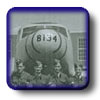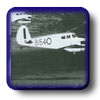John Aitken
 A
Royal New Zealand Air Force (RNZAF) man, Flight Lieutenant
(F/L) John K. Aitken was posted to No. 3 Service Flying
Training School (SFTS) Calgary, where he
received advanced flying training and ultimately, his Wings.
Unlike other trainees, F/L Aitken did not interact with the
local communities a great deal. He did, however, greatly enjoy
the Canadian landscape and leave found him exploring the Calgary Zoo
and Banff, canoeing amongst beavers and moose and spending
afternoons trapping gophers with friends. A
Royal New Zealand Air Force (RNZAF) man, Flight Lieutenant
(F/L) John K. Aitken was posted to No. 3 Service Flying
Training School (SFTS) Calgary, where he
received advanced flying training and ultimately, his Wings.
Unlike other trainees, F/L Aitken did not interact with the
local communities a great deal. He did, however, greatly enjoy
the Canadian landscape and leave found him exploring the Calgary Zoo
and Banff, canoeing amongst beavers and moose and spending
afternoons trapping gophers with friends.
Leave was an integral component of training, and was
a effective way for those in training to relax and take a
break from the harsh realities and seriousness of training.
The simple pleasure of leave is captured in the following
expert.
We used to get leave every now and then and sometimes go
into the city [Calgary]. The tramlines were right outside the camp
gate, and we visited the excellent parks, etc. There was
quite a good zoo where we saw coyotes and squirrels, and
I suppose many other North American animals, too. There were
also concrete replicas of dinosaurs, of which there were
a lot of their bones discovered in this area. Some were
so large that you could walk upright right underneath them.
There were lots of waterways we could explore by canoe.
In general, though, we did not have much contact with the
local population, and, as far as I know, none of us ever got
to see the inside of a Canadian home. This was quite the
opposite in Eastern Canada where most of the Royal Cana dian
Air Force (RCAF) stations had standing invitations for
overseas trainees to stay with local families... dian
Air Force (RCAF) stations had standing invitations for
overseas trainees to stay with local families...
One weekend, some of us went up to Banff by train and stayed
in a boarding house. We had a good look at the Bow Falls
and the huge Banff Springs Hotel, which was closed at the
time, but whether it was for the season or for the war, I
am not sure. We hired bikes and got around quite a bit and
I rented a trout rod, but didn't have any luck. We had a pretty
good time and resolved to back again if we could.
One of our pastimes if we had half of a day off was to
try and catch gophers, the little ground squirrels that were
very common around the perimeter of the airfield. They
were very watchful and would duck down into their burrows as
we approached, but we would put a slip knot noose around
the hole and retire a distance to the other end of our piece
of string. After a while, just the lop of a head and a couple
of eyes would appear, but if we kept still, a little more,
and a little more, would come out. Then a jerk on the string
and "gotcha"! They had a nasty pair of little
fangs and it was a bit of a risk holding them to get the
noose off again and let them go.
...The Canadians had very strange liquor laws. Down in the city there were beer parlours with separate
entrances for males and females, with tables and chairs down
the sides. But, once you got to the bar, it was common
to both sexes. I can't remember whether you could have a
female at your table, but I don't think so. You couldn't
take any liquor away with you, and had to have a liquor
license, which restricted you to so much of this or that
per month, according to the strength of the booze you were
buying. We all had to go down to the government liquor
store
to get enough for the [graduation] party and produce our identity cards
to get our licenses. I was only 20 at the time and if the
minimum age was 21, it did not seem to matter.
[On another leave], from May 29th, 1943 until 2200 hours
June 7th, 1943, we were given permission to visit the United
States. We had enjoyed our previous visit to Banff so much,
however, that five of us— Dave Moriarty, Gallagher, Jack
Brightwell, Lyn Price and myself—went up there for a few
days before heading off east. We rented a little log cabin
just across the river from the shopping area and had no
trouble feeding ourselves, as food rationing in Canada was a
bit of a joke. We hired canoes and paddled up river, then up
a little creek and under a railway bridge. When the creek
got narrow we dragged the canoes until we came out onto a
little lake. On the far side, there were a couple of moose,
but they took off before we got near. Several beavers were
swimming around. When we paddled up near them, they would
slap the water hard with their tails and dive. It was good
fun, we even got close enough to get splashed from the slap.


|
|
|
 Heritage Community Foundation Presents
Heritage Community Foundation Presents Heritage Community Foundation Presents
Heritage Community Foundation Presents